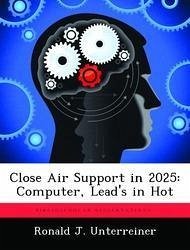The mission of Close Air Support (CAS) currently exists in every service doctrine and will continue to be required in 2025. Advances in technology will reduce the many shortfalls currently causing concern regarding the CAS mission. In 2025 time-critical applications of air and space power in support of troops on the ground will be vastly simplified from the perspective of both the tasker and the attacker. This paper describes the requisite systems and technology needed for aircraft to perform the mission and does not discuss organizational issues.Advances in ground based firepower are expected to proceed at a pace commensurate with technical advances in air power perhaps reducing the dependency of ground forces on air support, depending on the coalition elements' technical base. The ability for ground forces to overwhelmingly engage an opponent will always be a goal of the ground commander, and commanders will plan engagements to optimize usage of their available power. Unforeseen opportunity is frequently a product of warfare. Maintaining the flexibility of tactical forces ensures exploitation of such good fortune and rapid response to its evil twin -- bad luck. Regardless of doctrinal issues about the best way to employ air power there will always be opportunity to influence the ground battle directly from the air with air-to-ground weapons. In future conflicts the most likely first priority of air power will be to attain air and space superiority, concurrently or immediately following the shock delivered by the initial strategic attack. Attaining air superiority allows a fluid reapportionment of air and space assets. Single mission tactical aircraft are luxuries not likely to be affordable with evolving fiscal realities.
Hinweis: Dieser Artikel kann nur an eine deutsche Lieferadresse ausgeliefert werden.
Hinweis: Dieser Artikel kann nur an eine deutsche Lieferadresse ausgeliefert werden.








